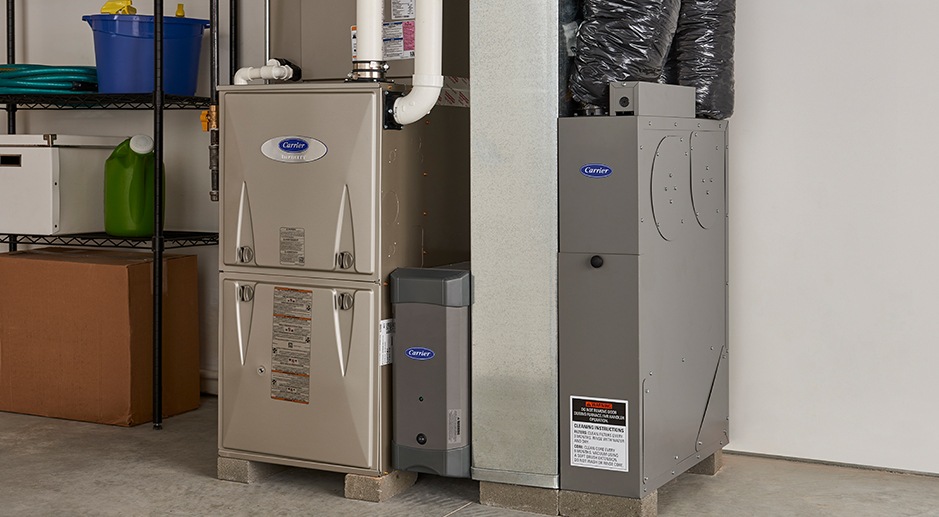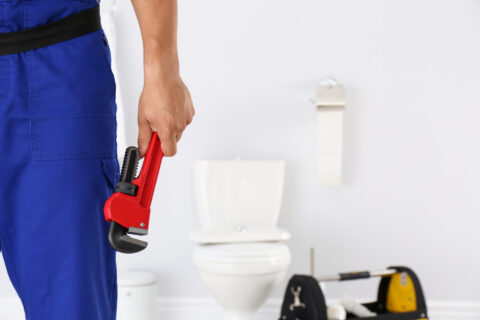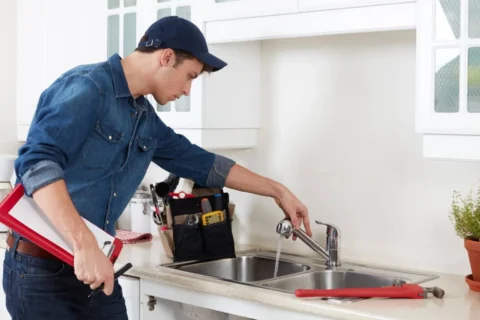How to Choose the Right Size Furnace for Your Home – A Complete Guide
Key Takeaways
-
Selecting the correct furnace size will help you save energy, keep your home temperature even, and ensure your comfort for years to come. Whether heating or cooling, properly sized systems work less, provide savings on utility bills, and maintain a more comfortable indoor air environment.
-
When furnaces are oversized, they are more likely to short cycle, causing increased wear and tear as well as poor humidity control. Units that are too small won’t be able to keep up with your heating needs, leading to cold, drafty places and increased energy bills.
-
Considerations such as the size of your home, home layout, insulation quality, and your local climate conditions heavily impact furnace sizing. Getting the right measurements and knowing what your home has and needs are key to ensuring proper selection.
-
Calculating the proper furnace size requires measuring square footage, determining BTU needs, and factoring in insulation and climate zones. Working with a professional will guarantee the most accurate sizing based on your home’s requirements.
-
To get the most savings and ensure the furnace you choose is the most compatible with your home’s heating system, seek out energy-efficient furnaces with high performance ratings. Preventative care is key to keeping your furnace running efficiently and extending its lifespan.
-
If your furnace is constantly breaking down and requiring repairs, consider replacing it. Choose a properly sized and energy-efficient model for dependable heating and energy cost savings.
Choosing the right size furnace will save you money, energy, and help keep your home more comfortable. A furnace that’s too small will have a tough time heating your space comfortably. An oversized furnace can lead to hot and cold spots and excessive energy use.
Factors like the square footage of your home, ceiling height, insulation quality, and local climate all play a role in determining the right size. Furnaces are rated in BTUs (British Thermal Units), a measurement of their heating capabilities.
Getting familiar with these measurements will help you make sure your new system is a good fit for your home’s needs. This guide will walk you through key considerations and practical steps to make an informed decision, helping you balance performance, cost, and long-term comfort effectively.
What Is Furnace Sizing
Furnace sizing is the process of determining the appropriate furnace size that a home requires for effective heating. This is measured in BTUs, or British thermal units, which indicate the total heat a furnace can generate in an hour. Using a furnace size calculator can help homeowners find the ideal furnace size based on their specific heating demands.
Choosing the correct size furnace ensures that your home remains comfortable without wasting energy. A furnace that is too small will struggle to maintain comfortable temperatures, while an oversized furnace will cycle on and off too quickly, leading to inconsistent temperatures and a shortened lifespan. Therefore, proper sizing is crucial for achieving maximum furnace performance and efficiency.
Heating capacity in BTUs is paramount. For instance, larger homes typically require furnaces with higher BTU ratings to effectively circulate heat throughout the space. Investing in high efficiency furnaces (90% AFUE or greater) can reduce the BTU capacity needed, as they provide more usable heat.
A comprehensive Manual J Load Calculation is essential for accurate furnace sizing. It takes into account key factors like square footage, insulation, and climate zone heating factors. Most gas furnaces on the market have an efficiency rating of 80%, but opting for higher efficiency models can lead to significant energy savings.
Ultimately, understanding the importance of precise furnace size recommendations can lead to better heating solutions. By consulting with local HVAC pros, homeowners can ensure their furnace installation meets their heating needs effectively and efficiently.
Consequences of Incorrect Furnace Sizing
Selecting an improperly sized furnace can cause severe complications that impact furnace efficiency, comfort, and long-term costs. Knowing the ideal furnace size is key to avoiding the unique issues presented by both oversized and undersized furnaces.
Problems with an Oversized Furnace
An incorrectly oversized furnace often causes short cycling. That’s because the unit is constantly turning on and off, never completing a full heating cycle. That’s a huge waste of energy, since the furnace uses more energy just to start up each time.
A furnace that short-cycles, shutting off every 10 minutes, for example, is extremely inefficient. This way your utility bills compared to just running consistently over 20 minutes.
Additionally, constant cycling puts undue stress on components like the blower motor and heat exchanger, leading to increased wear and tear. This results in frequent breakdowns and costly repairs, making it essential to consult with local HVAC pros for accurate furnace sizing and installation.
To avoid these issues, it’s vital to determine the appropriate furnace size using a furnace size calculator, ensuring optimal performance and efficiency in your home heating system.
Issues with an Undersized Furnace
Alternatively, an undersized furnace will have a hard time keeping your home warm during winter months. This can result in some rooms being much colder than others, leading to uncomfortable cold spots and a lack of even heating.
For instance, an undersized furnace in a 2,000-square-foot house will not be able to heat far-away rooms properly.
The undersized system uses more energy because it has to work harder to keep up. Those higher monthly bills add up fast.
This increases the wear on critical components, like burners and fans, making expensive repairs more inevitable.
Impact on Home Comfort and Costs
Incorrect sizing directly affects your ability to maintain consistent temperatures. A furnace that’s too large—or too small— for your home makes your home uncomfortable.
It results in energy-wasting over-compensation, more frequent repairs, and a reduced lifespan of your equipment.
Factors That Affect Furnace Sizing
Determining the best furnace size for your home involves more than just choosing a one-size-fits-all unit from a home improvement store. Using a furnace size calculator can help you assess your heating demands accurately. All of these factors combine to find the ideal furnace size, ensuring your home remains efficiently and comfortably warm.
Home Size and Layout
The larger your home, the more heat you will need to keep it comfortable. First, measure the square footage. So if your home is 2,000 square feet, begin by multiplying that number by a regional BTU conversion factor. This simple calculation will allow you to determine your heating needs.
The floor plan matters too. Open floor plans might let the heat circulate more effectively, while houses with more than one level usually require additional consideration. Since heat rises, this can create a disparity where upper levels are much warmer and lower floors cooler.
A correctly sized furnace should take these variances into account, heating every room to the same comfortable temperature.
Climate and Weather Conditions
Your local climate will play a large role in how your furnace should be sized. Colder regions require larger BTU outputs to address tough winters. For example, a house in Minnesota will require a stronger furnace than one in Texas.
Seasonal temperature swings, along with the biting dry air of winter, add more complexity to heating needs. Climate zones provide a useful rule of thumb, assisting you in choosing a furnace that matches your area’s requirements.
Insulation and Energy Efficiency
The quality of your home’s insulation, particularly in your attic, directly impacts how much heat you lose. Well-insulated homes hold onto their warmth better, meaning they usually need a smaller furnace.
That means modern energy-efficient homes are designed to keep the heat in. Just sealing the drafty gaps around your doors and windows can make a noticeable difference on your energy savings.
If you know your home is new or gets good insulation, you can choose the lower BTU recommendation. This is particularly important for your unique climate zone.
Number of Windows and Doors
Windows and doors are some of the biggest culprits when it comes to heat loss. Same with older windows that are single pane or drafty—these will make your BTU needs higher.
Double-paned, insulated glass does an excellent job keeping heat in. Several factors to consider include:
-
The type of glass used
-
Whether windows are single or double-paned
-
The presence of gaps or drafts around frames
A home with original, drafty windows is a common culprit in heat loss. To maintain comfortable conditions in that space, you may need a larger capacity furnace.

How to Calculate the Right Furnace Size
Understanding how various factors influence your heating demands is essential for determining the proper furnace size. An undersized furnace will struggle to maintain comfortable temperatures, whereas an oversized unit can lead to wasted energy and higher costs. This guide provides a comprehensive approach to using a furnace size calculator to accurately assess the ideal furnace size for your home.
1. Measure Your Home’s Square Footage
The best place to begin with sizing accurately is with the total square footage of your home, measured in the house’s finished, heated spaces. This step will make sure the furnace is powerful enough to heat the whole space.
-
Use a tape measure to find the length and width of each room in feet.
-
Then multiply these measurements to determine the square footage of each room. So if you have a room that measures 12 feet wide by 10 feet long that would be 120 square feet.
-
Simply add up the square footage of every room to find your home’s total area.
Don’t forget, the larger your house, the more BTUs it typically takes to effectively heat it.
2. Determine the BTU Requirements
BTUs, or British Thermal Units, are a measure of the heat output required. To get started estimating, figure out your total square footage.
Then, take that number and multiply it by 40, the minimum generally recommended for most U.S. Climate zones. For instance, a home that’s 2,000 square feet would need around 80,000 BTUs of heating power (2,000 x 40).
Further adjustments need to be factored in for ceiling height, number of stories, and special home layouts. The Department of Energy’s efficiency label on furnaces is a great place to start to know how well they perform.
3. Consider the Climate Zone
Your area’s climate is a huge factor in furnace sizing. Homes in colder zones, like the Midwest, demand higher BTU outputs.
Homes in much milder climates such as the South require a lot less. For example, homes being built in colder climates may use a factor of 50 instead of 40. Understanding your home’s local climate will help you maximize consistent, efficient heating.
4. Account for Insulation Levels
Fuel type affects the estimated furnace size. If a home has poor insulation, heat will escape quickly and the home will need more BTUs to stay warm.
Inspect attic and wall insulation to determine their R-values and check for damage. If you add insulation, the required furnace size will be lowered, saving energy and money in the long run.
5. Consult a Professional for Accuracy
Though these DIY calculations will give you a good starting point, the most accurate results will come from a licensed HVAC contractor.
Professionals create detailed load calculations, taking into account ceiling height, the shape of the home, and other factors to guarantee accuracy. They find problems, such as air leaks, that increase the amount of energy used by the furnace.
Trusting an expert reduces the guesswork and increases the comfort.
Tips for Choosing the Best Furnace
Compare Different Furnace Types
Choosing the best furnace for your home begins with knowing what’s out there. The three most common types to choose from are gas, electric, and oil furnaces.
Gas furnaces are an attractive option due to their high efficiency and lower operating costs, particularly in areas where natural gas is readily available. These systems typically have an AFUE (Annual Fuel Utilization Efficiency) score up in the 90s. This makes them the intelligent choice for energy-minded homeowners.
Electric furnaces are more straightforward to install and maintain, but they can come with more expensive operational energy costs — particularly in cooler climates. Oil furnaces can be a good option in areas where gas is unavailable, since they are less uncommon. They require frequent deliveries of fuel and more maintenance.
Here’s a breakdown of key features:
|
Furnace Type |
Efficiency Rating |
Maintenance Needs |
Cost Range |
|---|---|---|---|
|
Gas |
90%-95%+ |
Moderate |
$700-$1,600 |
|
Electric |
80%-90% |
Low |
$200-$1,500 |
|
Oil |
80%-90% |
High (cleaning, refills) |
$1,500-$6,000 |
Prioritize Energy Efficiency Ratings
Efficiency has a significant effect on performance and long-term cost. Furnaces with AFUE ratings of 90% or greater are best, because they use almost all of their fuel to produce warm air.
A 95% AFUE furnace, for example, doesn’t waste more than 5% of its energy and will lower your heating bills considerably. For states like Connecticut that experience frigid winters, high-efficiency models are all the more advantageous.
Connecting to smart thermostats reduces energy bills by an average of 20% each year.
Understand Maintenance Needs
Maintenance is a vital part of keeping your furnace running like it should. Gas furnaces generally need to be serviced once a year to clean burners and ensure there aren’t any gas leaks.
Electric models are less complicated, requiring only regular filter changes and replacements. Oil furnaces require more upkeep, such as routine cleaning and fuel level monitoring.
Protect your investment by seeking warranties that cover major components for a minimum of 10 years.
Check Compatibility with Home Systems
Consider your current HVAC system when choosing a new furnace. Check that the new model connects easily with existing ductwork and thermostats.
Smart thermostats are one of the best ways to save energy more efficiently. If you are replacing, ensure that the new furnace’s capacity is appropriate for your home’s heating requirements to avoid excessive heating or inadequate heating.
Signs You Need to Replace Your Furnace
Frequent Repairs or Breakdowns
If a furnace begins needing fix after fix, it’s usually an indication that the furnace is failing. For now, repairs are bearable, but they stack up fast in cost and aggravation. Replacing a blower motor or igniter can run up the hundreds of dollars.
If you find yourself making these repairs over and over, think about whether the cost of a new furnace would be more affordable over time. Furnaces age like every other appliance, and most will begin to show significant signs of wear around critical components (such as the heat exchanger) after 15 years.
Repairing them can be expensive and time-consuming. It’s the equivalent of patching an old, rusty car—it might drive for a few more miles, but the deeper issues are not resolved.
Rising Energy Bills
An obvious spike in your energy costs usually indicates a furnace that’s running out of steam. In the long term, parts such as burners and heat exchangers can wear out. This forces the system to work harder to keep your home at the same temperature.
When considering your whole home energy use, if it’s increased by at least 20% this winter, your furnace could be working inefficiently. Time to fix the furnace and address that metaphor!
Today’s furnaces have AFUE ratings of 90% or higher. These new, energy efficient models can save you hundreds on your heating bills compared to older furnace models.
Inconsistent Heating Performance
Are some rooms in your house like a sauna and others are still cold? Your furnace may be struggling to spread heat consistently. This problem is very common in older systems with damaged blowers or ductwork.
While your living room may warm up just fine, your bedrooms remain cold. This makes you have to constantly readjust the thermostat. Inconsistent heating hurts your home comfort.
It also means that your furnace is likely getting to the end of its functional lifespan.
Conclusion
Choosing the right size furnace
Better comfort and lower bills are guaranteed. An oversized or undersized furnace will cause hot and cold spots around your home, higher energy bills or more repair costs. Taking into consideration your home’s size, level of insulation, and climate will help you find the right fit. Things like BTU calculators and a little help from the pros go a long way.
When you have the opportunity to replace an old or poorly sized furnace, take the chance to invest in something more efficient and save yourself money. An investment in the right size means your home will be warm without using too much energy. Don’t rush, do your homework, measure carefully, you can even consult an expert. The right size furnace = years of comfort and confidence. Begin your furnace sizing journey today for a warmer, more comfortable home.
Frequently Asked Questions
What does furnace sizing mean?
Selecting the proper furnace size involves determining the heating capacity required for your home, measured in BTUs (British Thermal Units). Using a furnace size calculator ensures that your system can heat your space efficiently and effectively, optimizing furnace performance while minimizing energy consumption.
Why is choosing the right furnace size important?
Getting the proper furnace size is crucial for an efficient home, ensuring comfortable temperatures while keeping utility bills low. An undersized furnace can’t meet heating demands, whereas an oversized unit leads to wasted energy and inconsistent heating. Utilizing a furnace size calculator can aid in determining the ideal furnace size.
What happens if my furnace is too small?
If your furnace is too big, it will lead to inefficient furnace performance and uncomfortable indoor temperatures. Utilizing a furnace size calculator can help ensure you get the proper furnace size, preventing higher energy bills and minimizing wear and tear on your system.
What factors determine the correct furnace size?
Factors such as your home’s square footage, insulation quality, ceiling height, number of windows, and local climate play a crucial role in determining the ideal furnace size. Only a professional HVAC technician can perform an accurate furnace size calculation, typically using a Manual J load calculation.
How do I calculate furnace size for my home?
To determine the ideal furnace size for your home, multiply your square footage by 30 BTUs in cold climates or closer to 60 BTUs in warm climates. For example, a 2,000-square-foot house in a colder climate would need a furnace with a BTU output between 60,000 and 120,000. Consulting with local HVAC pros is essential for accurate furnace sizing.
How do I know when to replace my furnace?
Signs you need a new furnace include rising energy bills, uneven heating, frequent repairs, unusual noises, and an old furnace system (15–20 years or more). Consulting with local HVAC pros for a proper furnace installation can help determine if replacement is necessary.
Can an oversized furnace cause problems?
An oversized furnace often short cycles, leading to uncomfortable temperature fluctuations and higher energy bills. This inefficiency can be addressed by using a furnace size calculator to ensure the proper furnace size for optimal performance and energy consumption.


